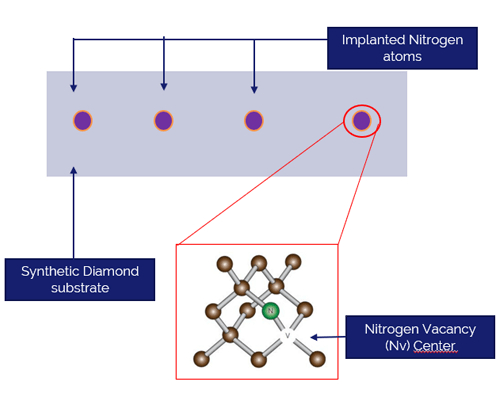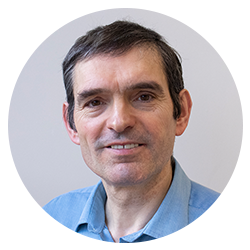 Part of the Oxford Instruments Group
Part of the Oxford Instruments Group
Expand
Collapse
Defects in diamond crystals which form its colour centres are a very valuable source of quantum systems. The NV centres in diamond possess an electron spin state that can be used as an excellent spin qubit.
These qubits possess some unique features that make this an exciting system to build quantum applications like very long coherence times event at room temperature, facility to access and couple to C13 nuclear spins and finally the ability to couple to photons that can carry quantum information over large distances that can enable quantum networks.
In this webinar, we will address the key advancements in the optimisation of processes for the fabrication of these powerful quantum devices.

Quantum technologies is attracting significant investment due to the range of potential applications, yet behind any new technology are enabling materials. Diamond is one such material, which has been used in demonstrations ranging from magnetic sensing to quantum computing. In order for these diamond quantum technologies to move from laboratory-based demonstrations to commercial products requires material with repeatable properties that can be produced with scale.
This presentation will focus on the optimisation of diamond materials developed for magnetic sensing and quantum information processing. The presentation will briefly discuss how CVD diamond is synthesised and then go on to discuss the characterisation of NV materials demonstrating repeatable properties such as T2* and intrinsic strain in a range of materials.
Application of diamond nitrogen vacancies for quantum computing, communication and sensing requires robust surface and feature preparation processes. This talk will feature our newly developed etching processes for thinning of diamond membranes while preserving the activity of laser-activated nitrogen-vacancy centres (NVCs). In addition, examples of diamond etching processes for building light manipulating structures via feature creation on surfaces (lenses, photonic crystals) will be shown.
Many proposed quantum information systems for communications and computing rely on the efficient transfer of information between optical and spin degrees of freedom. Diamond colour centres are excellent candidates for such interfaces, as they can combine highly coherent spin states coupled selectively to coherent optical transitions. Proof-of-concept experiments with nitrogen-vacancy (NV) centres have shown that spins can be entangled over km distances and quantum information stored for over a minute.
In order to advance towards practical devices, two of the principal challenges are the engineering of diamond materials to allow large scale parallelisation, and the engineering of devices to improve the spin-photon coupling efficiency.
In this talk, I will discuss recent efforts directed at both of these challenges, focusing on the controlled writing of colour centres into diamond and the construction of optical microcavity devices to control spontaneous emission.

Matthew is a Principal Scientist leading Element Six’s Diamond Quantum Technologies programme. Matthew received his master degree in physics from the University of Southampton in 2004 followed by completing a PhD in nanostructured semiconductors also while at Southampton in 2006. Then, in 2007, he joined Element Six to pursue a career as an industrial scientist. Initially, Matthew worked on a range of projects including fundamental diamond synthesis, diamond power electronics and diamond quantum technologies.
He now focuses his research and development efforts on commercialisation of diamond quantum technologies and has managed a range of successful collaborative research projects with many academic and industrial partners around the world. The results of his work and collaborations have culminated in over 15 patents and over 50 academic papers in the field of quantum technologies.

Colin specialises in dry etching techniques (ICP and RIE) and has a wide range of experience in the etching of silicon, oxides, metals, polymers, novel materials and etching for nanotechnology. Among his current interests are diamond processing for Quantum computing and sensors, and R&D into chemical etching for Magnetic Tunnel Junctions (MTJ).
His experience in this industry totals over 28 years. He holds an MA degree in Chemistry from the University of Oxford and an MSc degree in Electronic Materials and Devices from the University of Greenwich.

Jason completed his DPhil in Condensed Matter Physics at the Clarendon Lab in 1997, and after postdocs in S. Korea and Edinburgh, he returned to Oxford as a lecturer in the Department of Materials in 2004.
His research has meandered from high-pressure semiconductor electronics to single photon detectors and nanomaterials, and for the past 10 years, he has found focus on controlled light-matter interfaces for quantum technologies.
Since 2015 he has led the effort towards diamond qubits within the UK Quantum Technologies programme and has collaborated with Oxford Instruments Plasma Technologies and Element Six in the fabrication of diamond quantum devices.